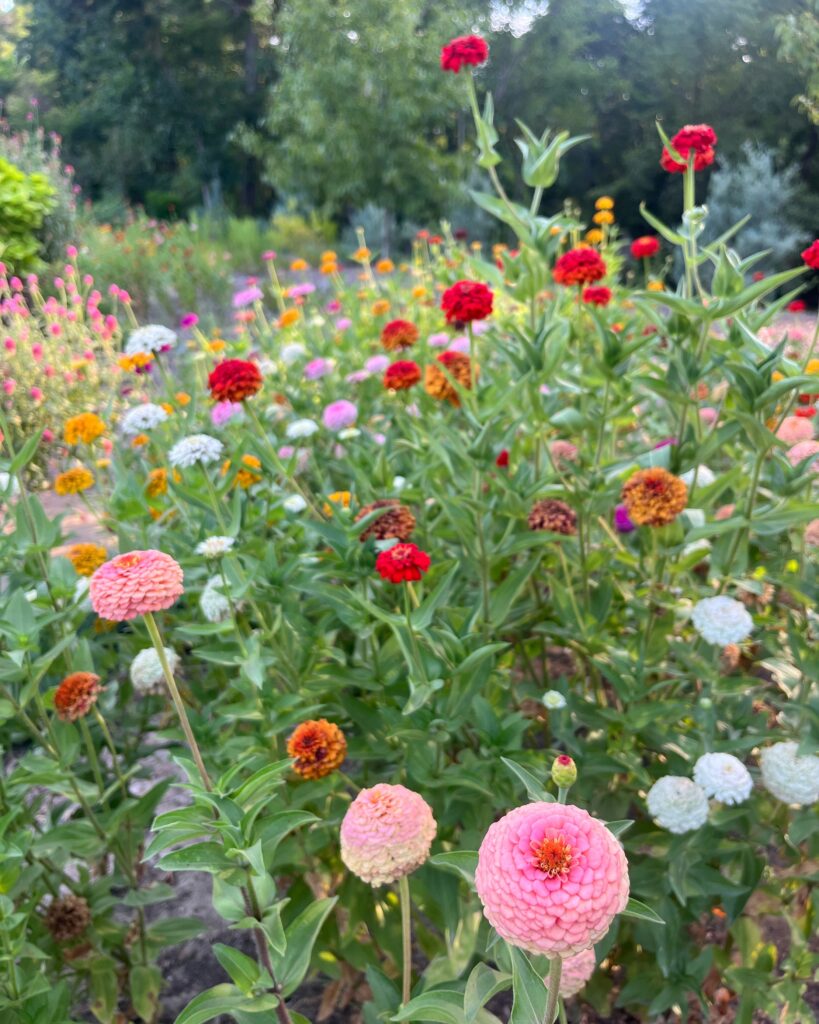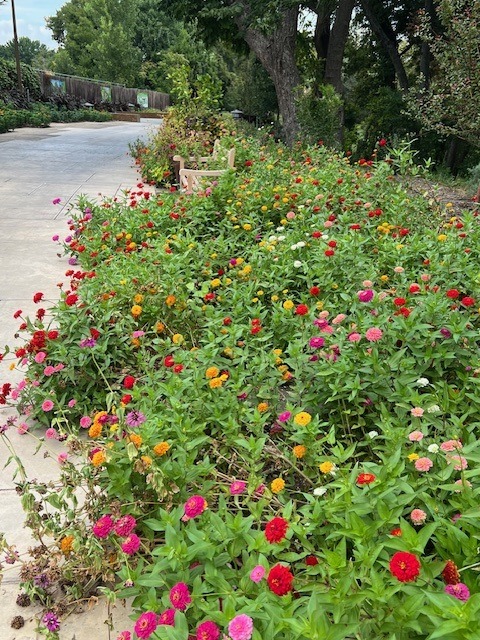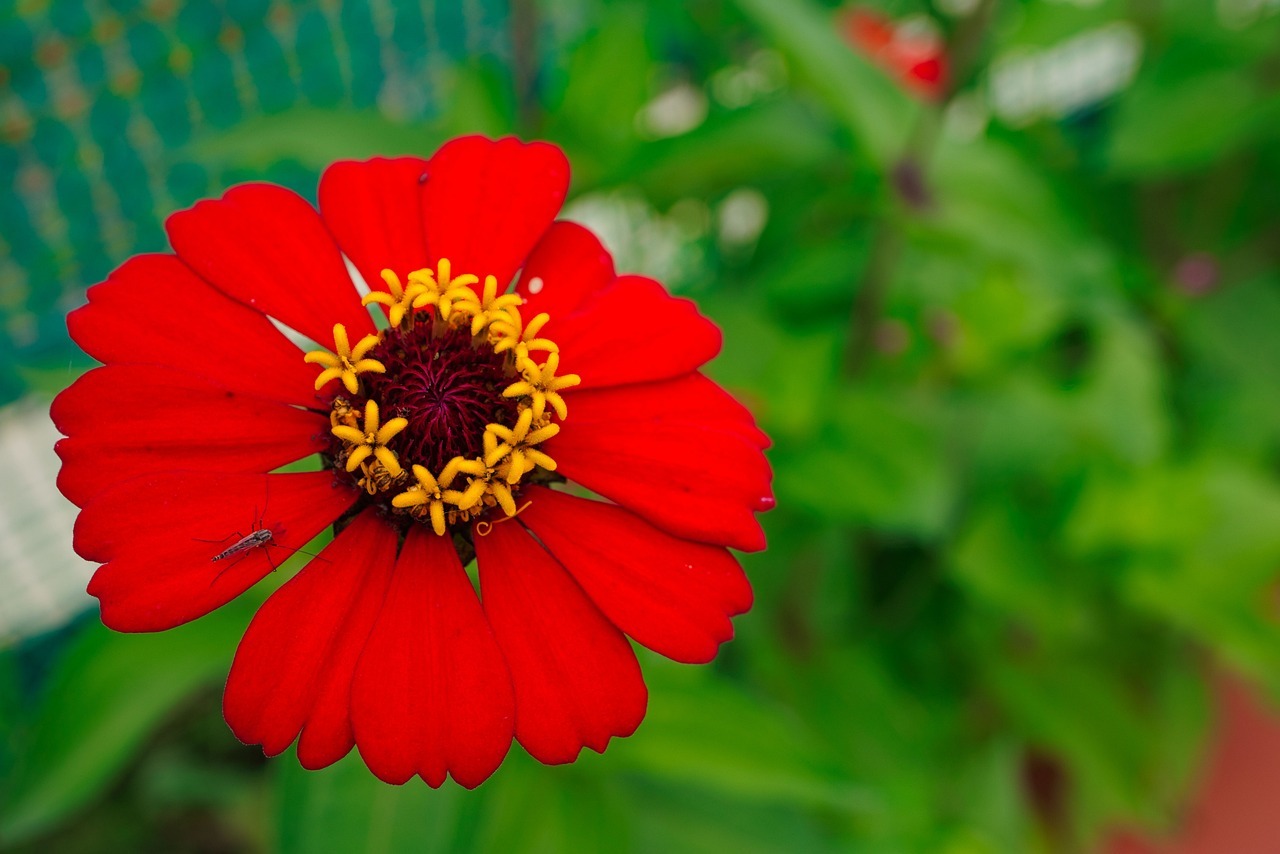
Zinnias (Zinnia) are as close to instant gratification that you can find in the Texas garden. Easy to grow, heat tolerant and bursting with color, these flowers are guaranteed to take your garden from “blah” to “wow!”
The Garden turned to zinnias last year when the reconstruction of Old Garden Road wrapped up in late spring. The horticulture team needed an easy and fast way to beautify the pedestrian walk, and zinnias were the answer, says Garden Projects Coordinator Stephen Haydon. “We sowed zinnias directly in the soil, and within a few weeks we had a stunning display,” says Haydon.
That’s one significant advantage of zinnias: they’re easy to grow from seeds sown directly in the garden. The Garden planted two seed blends along Old Garden Road: Oklahoma Mix and Benary’s Giant. Benary’s Giant zinnias grow three to four feet tall with double blooms that reach up to five inches across. Their long stems make ideal cut flowers. Oklahoma Mix features two-inch-wide semi-double and double blooms on two- to three-feet tall stems. Both mixes produce flowers in colors including peach, rose, yellow, red and white.
To grow zinnias, look for a location with full sun and fertile, well-drained soil. Sow seeds after the soil temperature has reached at least 70 degrees. “I do this by remembering Cinco de Mayo,” says Haydon. While numerous websites allow users to look up the temperature of their soil by zip code, soil in Fort Worth reliably reaches or exceeds this point right around Cinco de Mayo, explains Haydon. “So I sow zinnia seeds after Cinco de Mayo,” he says.
Sprinkle seeds on top of the soil and then rake lightly to cover. Keep the soil uniformly moist until the seeds germinate. After plants grow their first set of true leaves, thin the seedlings to one plant every nine to twelve inches.

Another popular variety of zinnia for North Texas is the Profusion hybrid series. These flowers are better grown as seedlings from garden centers, and they are widely available as bedding plants. Profusion zinnias grow eight- to 18-inches tall and remain tidy and compact with single and double blooms. While tall varieties of zinnias like Benary’s Giant do best along the back of flower beds, Profusion zinnias are ideal for the fronts of beds or in containers.
Zinnias will bloom all summer long with a little care. Simply remove spent blooms (i.e., “deadhead” the flowers), or–even better–harvest flowers to display inside and encourage new blooms. The more frequently you harvest zinnia flowers, the more blooms they will produce.
The plant happily tolerates our highest temperatures with regular watering and will continue to bloom until the first frost. Pollinators including bees, butterflies and hummingbirds love zinnias.
Zinnias are annuals, which means they need to be replanted each year. You can find instructions online on how to save zinnia seeds if you choose not to buy new.
Garden staff recently sowed zinnia seeds along Old Garden Road again, so keep an eye out for their progress on your next visit. “They were fantastic last year, and I expect they will be wonderful this year as well,” says Haydon.






